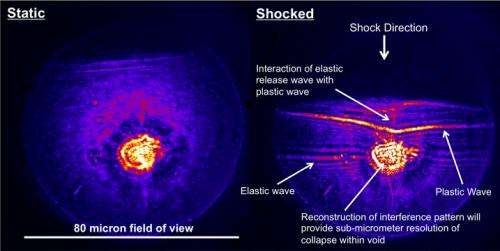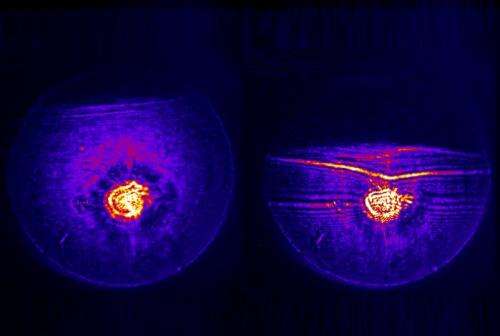First in-situ images of void collapse in explosives

While creating the first-ever images of explosives using an x-ray free electron laser in California, Los Alamos researchers and collaborators demonstrated a crucial diagnostic for studying how voids affect explosives under shock loading. The in situ data constitute the first experimental step toward developing next-generation, physically based mesoscale models with predictive capability for high explosives.
Significance of the research
The heat generated when small voids in high explosives collapse is postulated to be one of the mechanisms for formation of "hot spots," which lead to shock-induced reaction and detonation initiation. In this study, the researchers used the x-ray free electron laser at the SLAC National Accelerator Laboratory's Linac Coherent Light Source (LCLS), the world's most powerful x-ray laser. The team dynamically imaged the collapse of 10-micron diameter voids in single crystals of the explosive pentaerythritol tetranitrate (PETN) and simultaneously measured x-ray diffraction to investigate high rate crystalline mechanics. The achievement supports the goals of LANL's predictive capability framework (PCF).

Research achievements
These were the first ultrafast (nanosecond regime) and high resolution (sub-micron) images of explosives. The researchers will analyze the x-ray images and compare them with simulations of the shock wave interactions, plastic flow and jetting during void collapse. The team will examine in situ shocked x-ray diffraction data to extract previously unattainable equation-of-state information. Demonstrating the extent of mission-relevant information that can be extracted from in situ experiments like these is important and timely for the Laboratory's proposed signature science facility, Matter-Radiation Interactions in Extremes (MaRIE).
Provided by Los Alamos National Laboratory





















